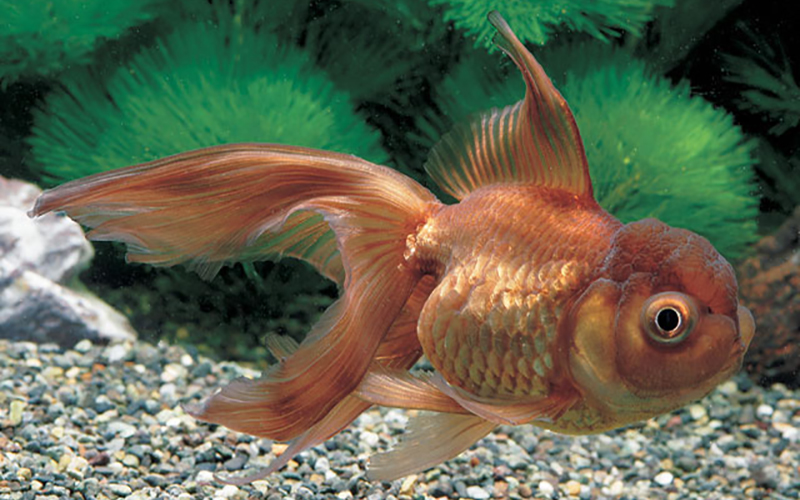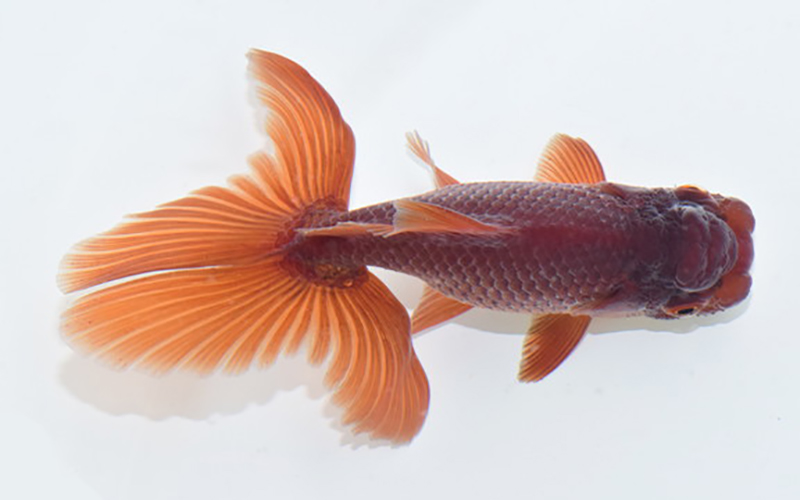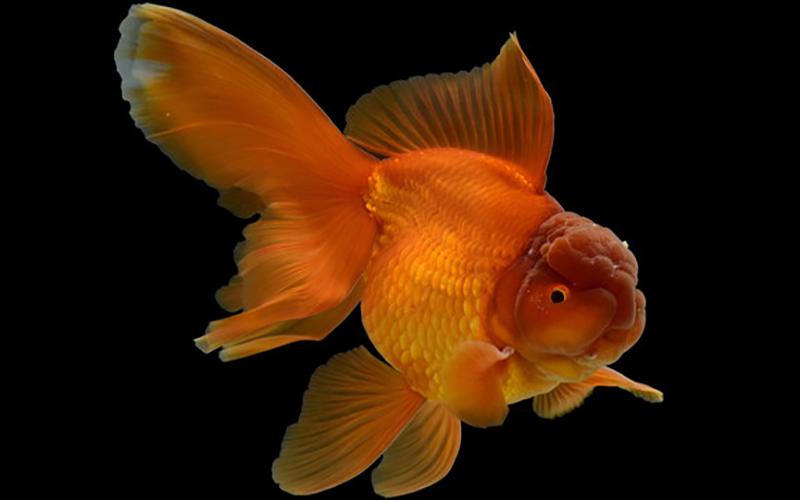ecology
Table of Contents

Chakin,This goldfish has a very austere brownish-brown body color. Although it is named "brown goldfish," there are two body colors: a brownish-brown strain and a blackish-brown strain.There are also two body types: Ryukin-type and Dutch lion's head type. In general, most of the chakin you see are of the Dutch lion's head type.
Chakin,It is one of the goldfish imported to Japan from China, like the tancho and the blue-bellied fish. It was imported to Japan around 1955, not so different from the Tancho and other goldfish. The Chakkin itself has a short history among goldfish, becoming widely known in China around 1950, while the Charyukin became known around 1925.Therefore, it has a history of only about 100 years. It took a long time for the general public to know about the Chakin because it was originally treated as a courtly goldfish in China. The name of Chakin differs from country to country; in China, for example, it is called "purple high head" or "purple lion's head," while in the United Kingdom and the United States, it is popularly known as "chocolate Dutch.

The best way to enjoy the brown goldfish is how to appreciate its distinctive brownish-brown body color beautifully. For this purpose, we recommend viewing it from the side (side view) in an aquarium, etc., rather than from above (top view).By viewing it with a side view, you can enjoy the partial color intensity due to the beautiful brownish color reflected by light such as LEDs. Also, as for the Dutch lion's head type Chakin, you can enjoy the growth of the flesh on the head as it grows. If you appreciate it in a white basin, you can see the change of the brownish-brown color from different angles depending on how the light reflects off it.
When mixing goldfish with other goldfish and other species, there is sometimes uncertainty as to what species is good and what species is not. First,There is no general prohibition against this or that when mixing goldfish with other species.Therefore, depending on the personality and environment of the goldfish you keep, even species that are said to be bad for each other may get along well with each other. However, there is also the matter of compatibility between goldfish. If you put incompatible goldfish together, there is a high possibility that they will fight or that only one of them will monopolize the food. However, as I explained in the beginning, there is no prohibition for goldfish to mix with each other, so if you want to mix them, you may do so. Now, let us explain the goldfish that are compatible with brown goldfish and those that are not.
The goldfish that work best with the Chakin are Dutch-type goldfish such as the Azumanishiki (Azuma Nishiki) and the Tanchou (Tanchou).The Dutch type goldfish is characterized by the fleshy mass on the head that develops as it grows and the beautiful tail fin that is as beautiful as the Ryukin type, so we recommend that you compare the growth changes of each variety.
Goldfish that are incompatible with Chakin are Ranchu-type goldfish such as Ranchu and Edonishiki.Many of the Ranchu-type goldfish are poor swimmers, and if they are mixed with the Orchid Lionhead, the Orchid Lionhead may take the Ranchu-type goldfish's food. If you do mix them with the Ranchu type goldfish, please be careful that the Ranchu type goldfish is able to eat the food.

Chakin, the method of keeping is not much different from that of the Dutch lion's head and others.Chakin from Japan soon after it was imported from China to Japan was mostly Ryukin-type with a slightly longer body, but nowadays the lion's head strain, such as those imported from China, is the mainstream.In the Ryukin-type, the head protrudes slightly as it grows, whereas the lion's head lineage is characterized by a fine head mass. However, it has the disadvantage that the tail fin is often a little poorer than in the Ryukin-type. The number of Chakin exhibited at goldfish fairs has tended to decrease in recent years. The reason for this is the disadvantage of the color brown in goldfish. For example, if there are both brown and chintz goldfish on display in a store, most people will choose the chintz goldfish. The reason is that chintz (red and white) is a vivid and easily recognizable color. The reality is that the brown goldfish, with its generally subdued colors, is very difficult to be popular. So, if you have a chance to see chakin at a specialty store, please enjoy the unique color of chakin.